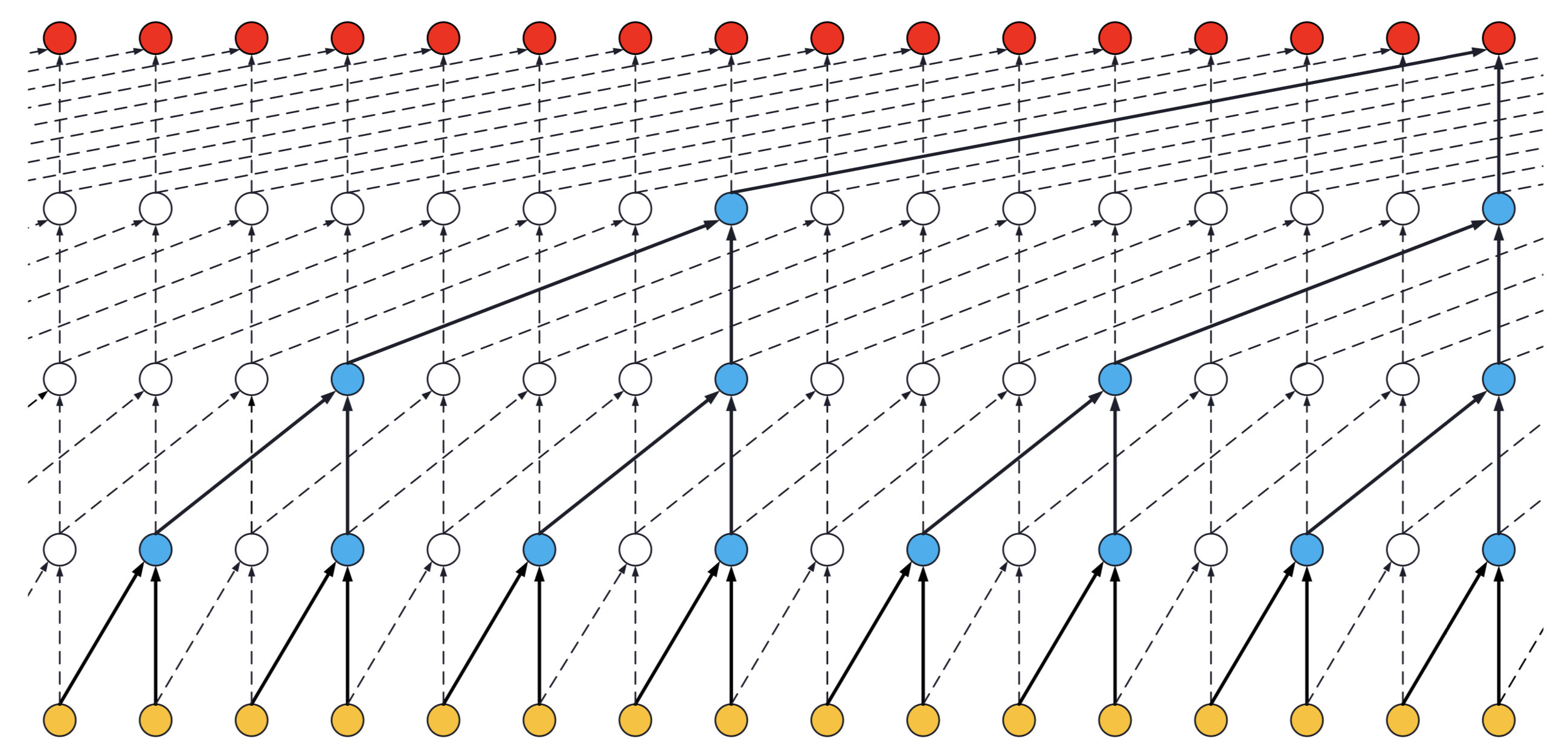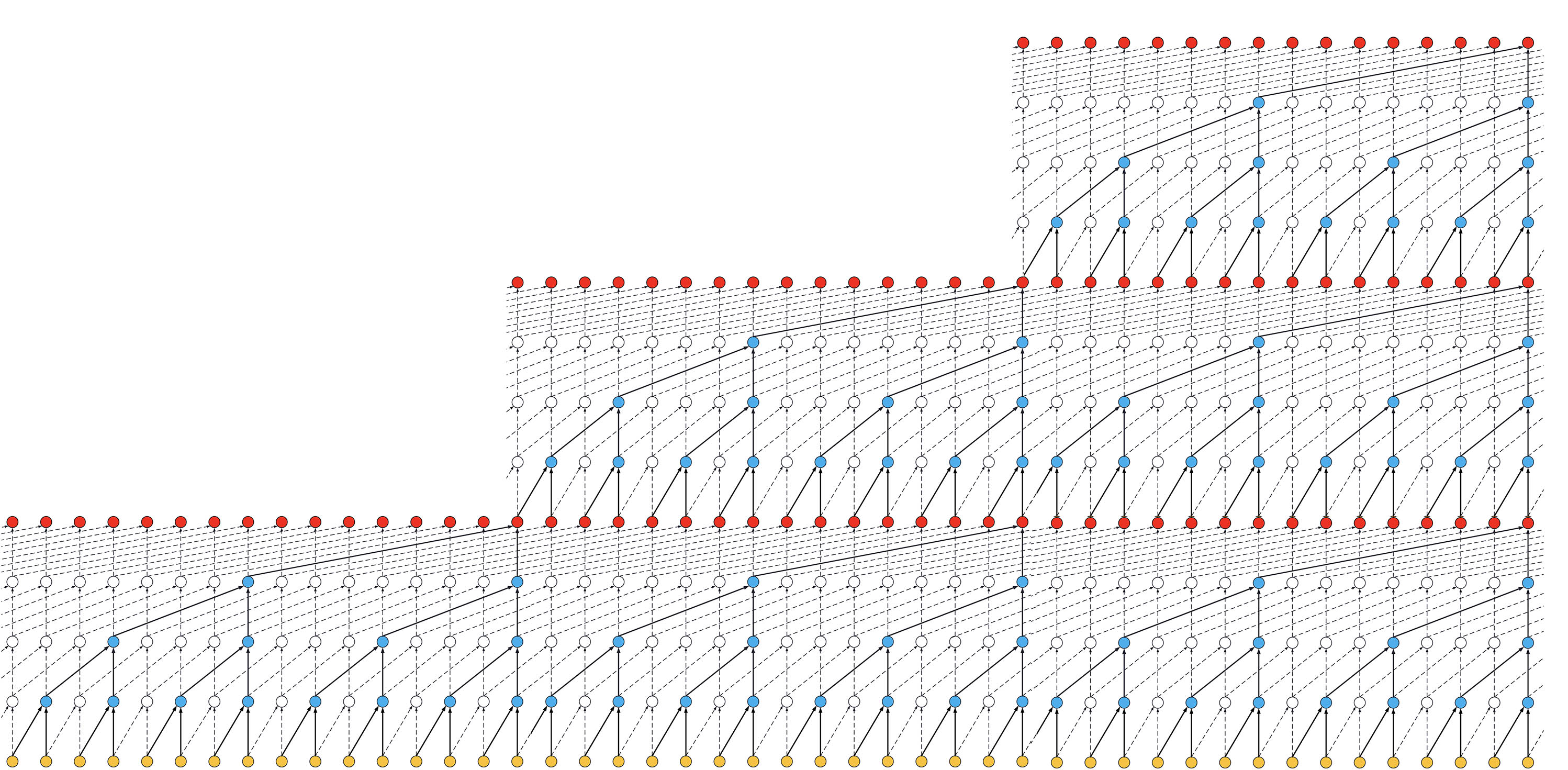-
-
Notifications
You must be signed in to change notification settings - Fork 451
New issue
Have a question about this project? Sign up for a free GitHub account to open an issue and contact its maintainers and the community.
By clicking “Sign up for GitHub”, you agree to our terms of service and privacy statement. We’ll occasionally send you account related emails.
Already on GitHub? Sign in to your account
Confused about nb_stacks #9
Comments
|
I'm a bit confused about it too, but my understanding is that you can stack up the TCN blocks, increasing the receptive field as you do. So for a single stack, if the kernel size was 2, the dilations were [1,2,4,8], you would get the situation in the image below: so a receptive field of 16. If you specified 2 stacks my intuition is that you would get the situation below, that is, an increase in the receptive field to 32: If you increased the number of stacks to 3, the size of the receptive field would increase again, such as below: Philippe, can you please confirm whether my understanding is correct please. |
|
@alextheseal I wrote that some times ago but it looks correct. |
|
Thanks! |
|
Yeah I updated the code to reflect this. It was a bit confusing sorry about that :) |
|
I'll update it again to incorporate only one single parameter for the dilations: So that when we specify N=4, it would mean [0, 1, 2, 4, 8] |



I'm reading the code and I'm just a little confused about the below lines:
for s in range(nb_stacks):
for i in dilatations:
x, skip_out = residual_block(x, s, i, activation, nb_filters, kernel_size)
What is the interpretation of this? In the paper, I had thought that each layer would have its own dilation rate, typically 2 ** i for the ith layer. What is happening here?
The text was updated successfully, but these errors were encountered: